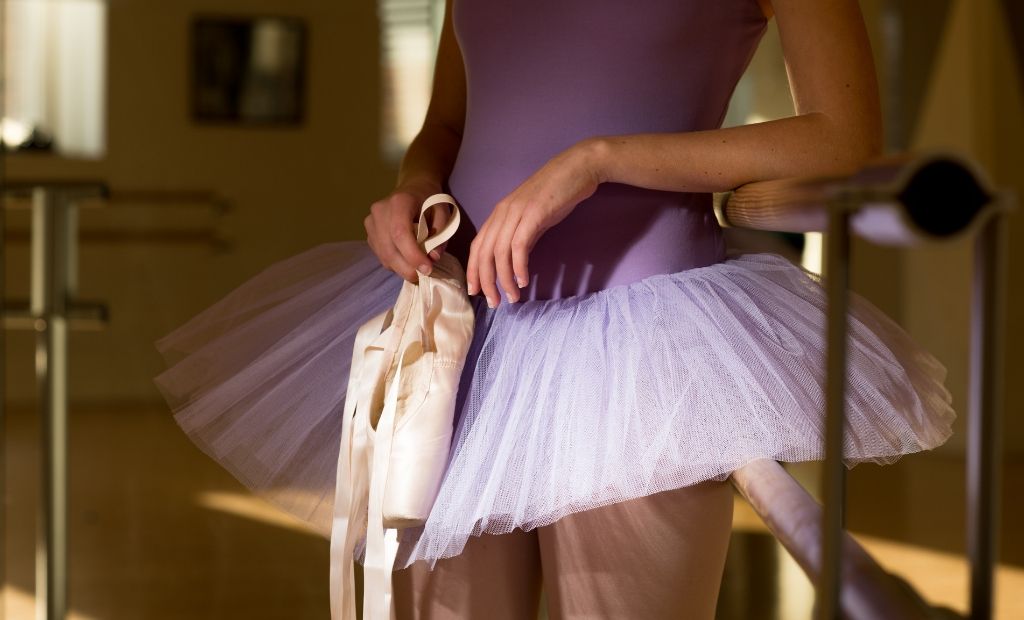
When are you ready to go en pointe?
When are you ready to go en pointe?
When am I ready to go en pointe?
Follow BLOCH's complete guide to knowing when you're ready to progress on to pointe.
Dancing en pointe is the pinnacle of every ballet dancer’s journey. This classical technique is renowned as the most iconic and elegant element of ballet, enabling a dancer to appear light as a feather, and completely fluid and graceful.
But how can you tell when you’re ready to start practising? When are you ready for pointe shoes? And what are the requirements for pointe work? Pointe work can be dangerous and damaging to the feet if attempted incorrectly — or if a dancer is not quite strong enough to take that step up — so it’s hugely important to be well prepared and practice caution to limit any potential damage.
Here's what you need to know to get ready for dancing en pointe.
What is an appropriate age for pointe shoes?
A common question is ‘when are you ready for pointe shoes?’ or what age is too young for pointe, but really, a lot depends on the individual dancer. Development matters more than age. As bones do not fully develop until teenage years, the dancer must be strong and skilled enough to protect the bones of the feet when dancing en pointe.
Most experts agree that ballet students should be at least 11 and have consistent ballet training to start pointe work – younger than 11 is generally agreed to be too young for pointe. Many choose to wait until 12 or 13. Patience is key here for learning how to safely and securely dance en pointe – it is far better to wait a year and ensure the foot is fully developed than rush into it.
As there’s no specific set age for pointe work, and requirements for pointe work will vary from dancer to dancer and studio to studio, it’s always best to discuss progression to pointe with your dance teacher.
How to get ready for going en pointe
Remember the old adage, 'you must learn to crawl before you can walk'? Well, the same goes for a ballet dancer — you must learn to dance on demi pointe before you're ready for pointe shoes and dancing en pointe. Beginning pointe training is unique to every dancer, but throwing on a pair of pointe shoes too soon could cause injury, or worse, irreversible damage to your body and feet. Having a solid foundation is what's important before you progress to pointe.

Requirements for going en pointe
It’s not as simple as just learning to go en pointe. The journey to going en pointe is exactly that – a journey! There are many requirements for pointe work, and it’s all about ensuring you have developed the technique, strength, control and articulation to go en pointe. When you’re ready to go en pointe, you should have:
- A good dance teacher who knows your skills and can provide safe training
- Been dancing for a number of years – three years regular ballet training of four to five hours a week is often considered the norm before beginning pointe work
- Developed strength in ankles, legs and core
- Been fitted for your first pair of pointe shoes
Once you’re ready to go en pointe your dance teacher will be able to take you through the specific movements needed. For now, concentrate on flexibility and strength training to ensure you are fully prepared for pointe work when the time comes. It’s definitely not a race, so stay focused on when the time is right for you.
You need to be strong enough for pointe work
If you break down the mechanics of pointe work, the source of power stems from the feet. Foot and ankle strength is a pinnacle pre-requisite for any dancer transitioning from soft shoes to a pointe pair. Proper foot articulation is the base for all dancing, and this is developed by taking regular ballet classes. Remember, all those tendus and relevés at the barre are a part of the curriculum for a reason!
For extra credit strength-builders when preparing to go en pointe, try a BLOCH Resistance Band. Pointing and flexing through the elasticity of the band will build foot and ankle strength. Another simple but effective exercise is to pick up objects with your bare toes — try pencils or marbles.
Going en pointe is not just about the feet
While foot strength is key for determining whether or not you are pointe-ready, all the body's muscles must be suitably equipped. Not only does this include the calves, quadriceps and hamstrings, but also the arms and torso too. Plus, don't underestimate the power of core strength – it is the centre of your body's gravity.

This will all happen as a result of showing up to class regularly, paired with repetition and hard work. When you're getting ready for pointe work, concentrate on proper alignment all the way from your pinky toes to the top of your head (at the barre and with centrework for example) and you'll get there.
Don't rush it!
You’ve been practising for some time, your confidence has grown dramatically and you feel like you're almost there, but don't rush it — remember, there's no right or wrong time to go en pointe. Trust your teacher's guidance and expertise to know and advise you when the time is right to begin your pointe training.
In the meantime, focus on your training and building strength, and avoid comparing your progress to that of your classmates. Before you know it you'll be ready and your teacher will deliver the exciting news you’ve been waiting for, that it’s time for you to purchase your first pair of pointe shoes!
Once you've been given the green light to start pointe work, book your expert pointe shoe fitting at our BLOCH London store to find your perfect fit!
